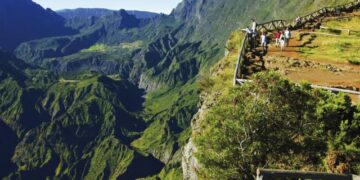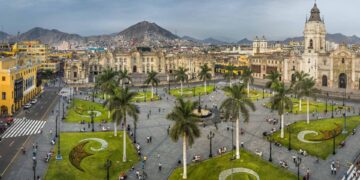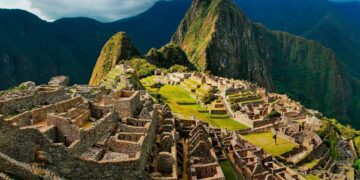– What are some popular South American dishes that have gained international recognition?
How South America Continues to Reign as the World’s Leading Culinary Destination
When it comes to culinary experiences, South America has long been regarded as one of the world’s leading destinations. From the vibrant flavors of Peru to the rich traditions of Brazil, the continent offers a diverse range of cuisines that cater to every palate. In recent years, South American cuisine has gained even more international recognition, with popular dishes like ceviche, empanadas, and asado becoming household names around the globe.
The Rise of South American Cuisine
South American cuisine has been shaped by a variety of influences, including indigenous ingredients, European colonization, and African slave trade. This unique blend of flavors and techniques has led to the development of dishes that are both delicious and culturally significant. In recent years, South American chefs have been at the forefront of the culinary world, winning top honors at international competitions and earning Michelin stars for their innovative cooking styles.
Popular South American Dishes
One of the most iconic dishes from South America is ceviche, a seafood dish that is typically made with raw fish marinated in citrus juices like lime or lemon. Another favorite is empanadas, which are savory pastries filled with meat, cheese, and vegetables. Asado, a traditional barbecue method popular in Argentina and Uruguay, is also a must-try for meat lovers.
Top South American Destinations for Foodies
For those looking to explore South America’s culinary scene, here are some top destinations to consider:
1. Lima, Peru
Lima has emerged as one of the culinary capitals of South America, thanks to its diverse food scene and world-class restaurants. The city is known for its ceviche, as well as dishes like lomo saltado and causa rellena.
2. Sao Paulo, Brazil
As the largest city in Brazil, Sao Paulo offers a wide range of dining options, from traditional Brazilian steakhouses to modern fusion cuisine. Don’t miss trying feijoada, a hearty stew made with black beans and pork.
3. Buenos Aires, Argentina
Buenos Aires is famous for its beef, with parillas (steakhouses) lining the streets of the city. Be sure to try a traditional Argentine barbecue paired with a glass of Malbec wine.
Benefits of Exploring South American Cuisine
- Experience vibrant flavors and unique ingredients
- Gain insight into the rich culinary traditions of South America
- Expand your palate and try new dishes
- Learn about the cultural significance of food in South American societies
Practical Tips for Foodies
- Research local food markets and street food vendors for authentic culinary experiences
- Reserve tables at popular restaurants in advance to avoid long wait times
- Ask locals for recommendations on hidden gems and must-try dishes
- Be open-minded and willing to try new flavors and ingredients
Firsthand Experience: A Foodie’s Journey through South America
As a self-proclaimed foodie, my trip to South America was a culinary adventure unlike any other. From savoring ceviche on the beaches of Lima to indulging in a traditional asado in Buenos Aires, every meal was a feast for the senses. The flavors, aromas, and textures of South American cuisine left a lasting impression on me, inspiring me to continue exploring the diverse culinary landscape of the continent.
South America continues to reign as the world’s leading culinary destination, offering a rich tapestry of flavors and traditions that appeal to foodies from around the globe. Whether you’re a seasoned traveler or a culinary enthusiast, a journey through South American cuisine is sure to be a feast for the senses.
Exploring the Peruvian Andes: A Unique Adventure Experience
In the midst of the majestic Peruvian Andes, a woman gracefully navigates the terrain in sandals crafted from recycled rubber tires, effortlessly spinning alpaca wool along the way. Meanwhile, I find myself struggling with the effects of high altitude, feeling the true magnitude of the Andes’ grandeur.
Embarking on an Upper Sacred Valley and Lares Adventure to Machu Picchu journey, I veer away from the well-trodden Inca Trail to seek a more intimate experience of the untouched beauty of the Peruvian Andes. With altitudes ranging from 3800 to 4300 meters, even the most physically fit individuals can feel the impact of the altitude. Therefore, acclimatizing in Cusco before setting off is crucial.
Cusco, with its stunning Andean backdrop, offers a blend of historical Inca sites, colonial architecture, and modern amenities, making it a popular stop for travelers. Staying at a luxurious hotel like – a former colonial manor turned five-star retreat – provides a perfect base for exploration. The hotel’s rustic charm, complete with antique furnishings and original artwork, offers a glimpse into Peru’s rich cultural heritage.
My journey began in Lima, hailed as one of the world’s top culinary destinations for six consecutive years. Renowned for its diverse gastronomic scene, Lima boasts culinary experiences on par with major global cities like New York and London. To witness this culinary mastery firsthand, a visit to the acclaimed restaurant is a must. Led by celebrity chef Pía León, the restaurant showcases Peru’s finest produce and culinary traditions.
As I delve into the trek, the ever-changing landscape captivates me at every turn. Crossing streams, navigating narrow valleys, and marveling at ancient Incan terraces, I am immersed in a world of rugged beauty. Expert guides enhance the experience with their insightful commentary on the region’s history and culture.
Each day culminates at the Mountain Lodges eco properties scattered along the route, where guests are treated to sumptuous meals made from fresh, local ingredients. The evening ritual of soaking in a private outdoor hot tub, surrounded by the Andean scenery, is a perfect way to unwind and reflect on the day’s adventures.
Arriving at Machu Picchu, the iconic World Wonder, is a highlight for many travelers. However, the crowds of tourists wielding selfie sticks can detract from the serenity of the site. For me, the true essence of the journey lies in my interactions with the indigenous communities we encounter along the way. Witnessing their ancient traditions and reverence for “Pachamama” (Mother Earth) is a profound experience that connects me to the living history of the Andes.
As our journey draws to a close, I am left with a sense of awe at the enduring vitality of Incan traditions in modern-day Peru. The opportunity to partake in ancient rituals and embrace the spiritual essence of the mountains leaves a lasting impression, reminding me of the profound cultural richness of this region.
Accompanied by Mountain Lodges Peru, Hotel B, and Inkaterra La Casona, this expedition offers a unique blend of adventure, cultural immersion, and gastronomic delights. The memories created in the Peruvian Andes will stay with me long after the journey ends.















